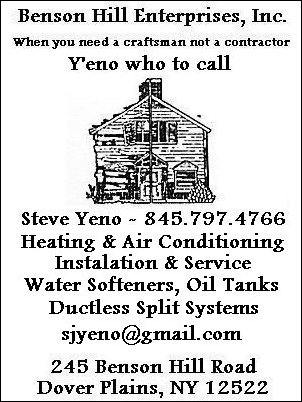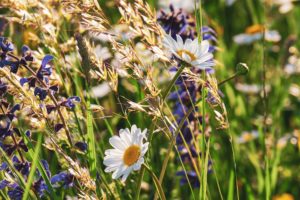
Meadow Planting Basics
If creating a wildflower meadow is on your garden list, the ideal time to sow is just a few weeks away.
By Thomas Christopher
Larry Weaner, an internationally recognized authority on meadow plantings and a gardener I greatly respect, told me that the correct answer to almost any question about our craft is: “it depends.” Certainly, that’s true if you ask what’s the best planting season. Most of us would automatically answer spring. Actually, though, the best time for planting depends on what species you are trying to start, and what the conditions are like in your garden.
If for example, your goal is, like mine, to plant an expanse of native meadow flowers, then an ideal time to sow the seed is actually just a few weeks from now, in early to mid-fall. The reason for this is that many of the native wildflower seeds need a period of moist chilling before they can break dormancy and germinate. This means that you will enjoy far more germination per pound of meadow flower seed with a fall sowing than a spring one. Plus, the success rate for the resulting seedlings will be better if you garden on a quick-drying sandy soil. The seeds of a fall planting will germinate just at the beginning of spring, when the weather is usually reliably moist, and have a chance to get their roots down deeper into the soil before the late spring/early summer periods of drought settle in. A spring planting will produce flower seedlings just getting started as the drought arrives, and so will face that stress at a more vulnerable stage of growth.
If you garden on clay soil, then a fall sowing may be better because such a soil is drier, less sticky and more workable then than in early spring. That means preparing the soil for planting will be easier in early fall.
One possible disadvantage of a fall planting (remember, “it depends”) is that it will leave the soil bare all winter. If your site is sloping, as mine is, then it will be prone to erosion until the flowers emerge in the spring. That’s why I’m going to plant a “nurse crop” with the meadow flower seed. A nurse crop is some fast-sprouting, short-lived species that will germinate in fall to hold the soil over the winter, and then die as the flowers establish themselves so that it doesn’t compete. The nurse crop I have in mind is annual ryegrass. Annual ryegrass seed germinates in just five to ten days, providing a quick and vigorous cover, but it is, as the name indicates, an annual and in zones 5 and north, it typically dies over the winter. The sowing for the annual rye nurse crop is fifteen pounds per acre.
I have aspirations for this meadow, besides the fact that it will largely liberate me from the mower. The soil around my house is too poor to support a good lawn without annual doses of fertilizer, which for environmental reasons I am not willing to provide. Lawn fertilizers are rich in nitrates, which are usually synthesized with a lavish consumption of fossil fuels, and a certain amount of the nitrates volatilizes and escapes as nitrous oxide, which is a greenhouse gas more than 200 times as potent as carbon dioxide. In contrast with turf, however, native meadow flowers typically thrive in such a condition of lower fertility. In fact, they compete more successfully against weeds on less fertile soils. Of course, meadow flowers are also far more hospitable to pollinators and other wildlife. The song sparrow who made her nest in my rather ragged lawn a year ago will greatly prefer a grassland that isn’t mowed in summer or fall.
Not all meadow flowers are compatible with each other, nor are they all equally well adapted to all soil and other site conditions. To ensure that mine do form a compatible community and that they like what they will find in my yard, I am going to shop at a nursery that specializes in meadow plantings, offering a number of seed mixes each designed for different circumstances.
One disadvantage of a fall planting is that the native meadow grasses that I hope to mix in with my flowers germinate at a lower rate when sown. If I were hoping to grow a meadow mostly of grasses, I would plant in spring. As usual, it depends.
Thomas Christopher is the co-author of “Garden Revolution” (Timber Press, 2016) and is a volunteer at Berkshire Botanical Garden. berkshirebotanical.org
Be-a-Better-Gardener is a community service of Berkshire Botanical Garden, one of the nation’s oldest botanical gardens in Stockbridge, MA. Its mission to provide knowledge of gardening and the environment through 25 display gardens and a diverse range of classes informs and inspires thousands of students and visitors on horticultural topics every year. Thomas Christopher is the co-author of Garden Revolution (Timber press, 2016) and is a volunteer at Berkshire Botanical Garden. berkshirebotanical.org.



